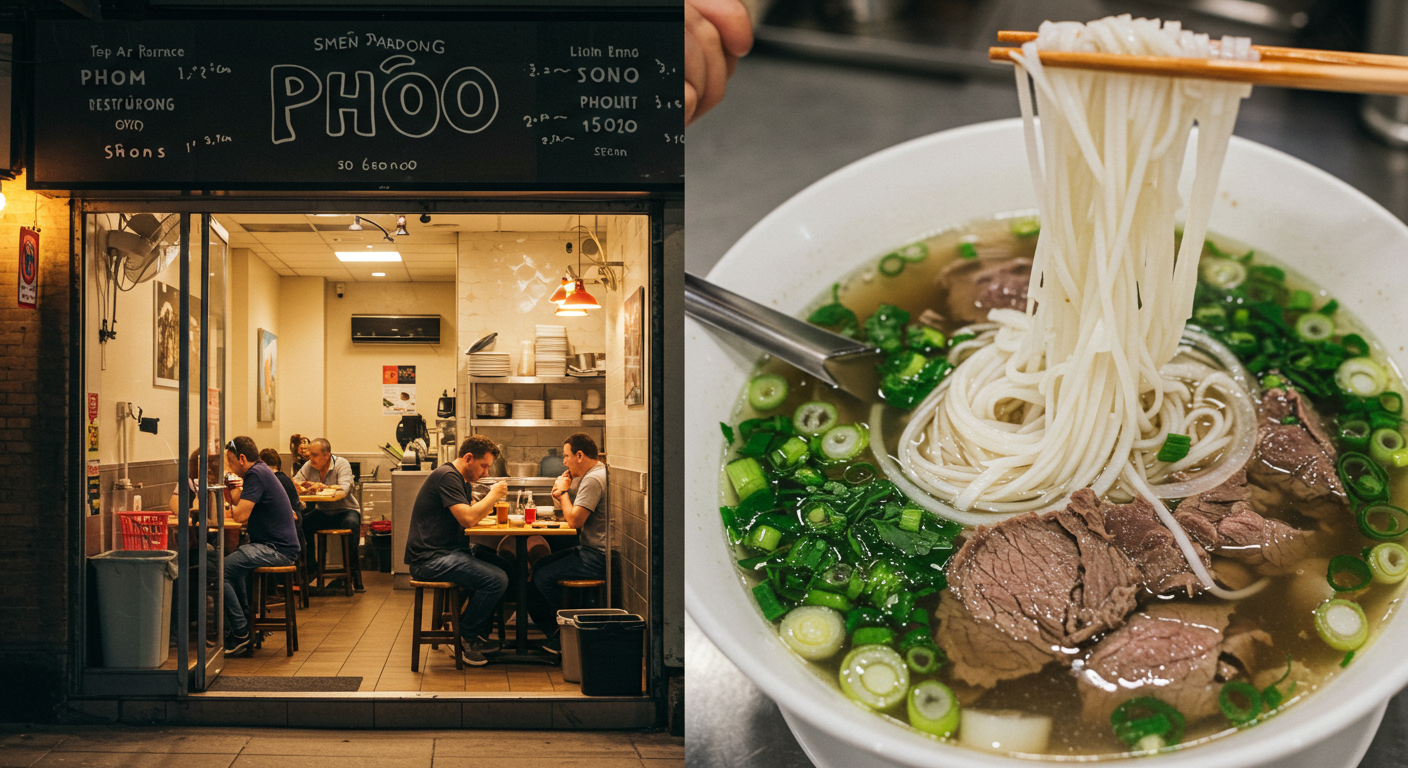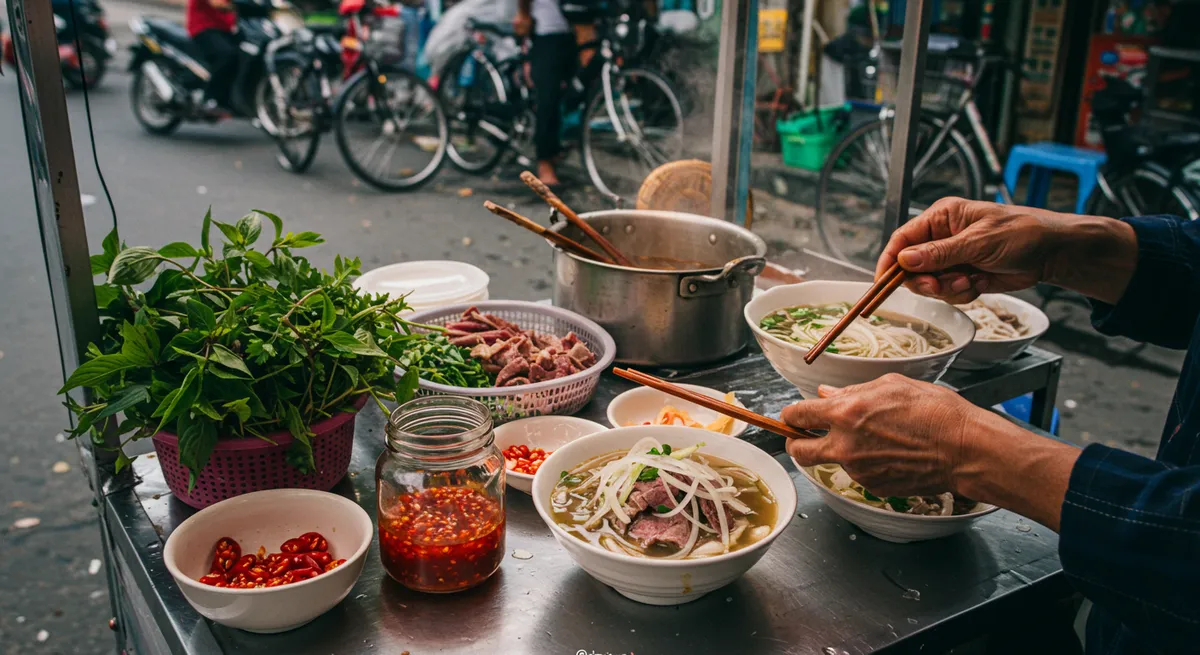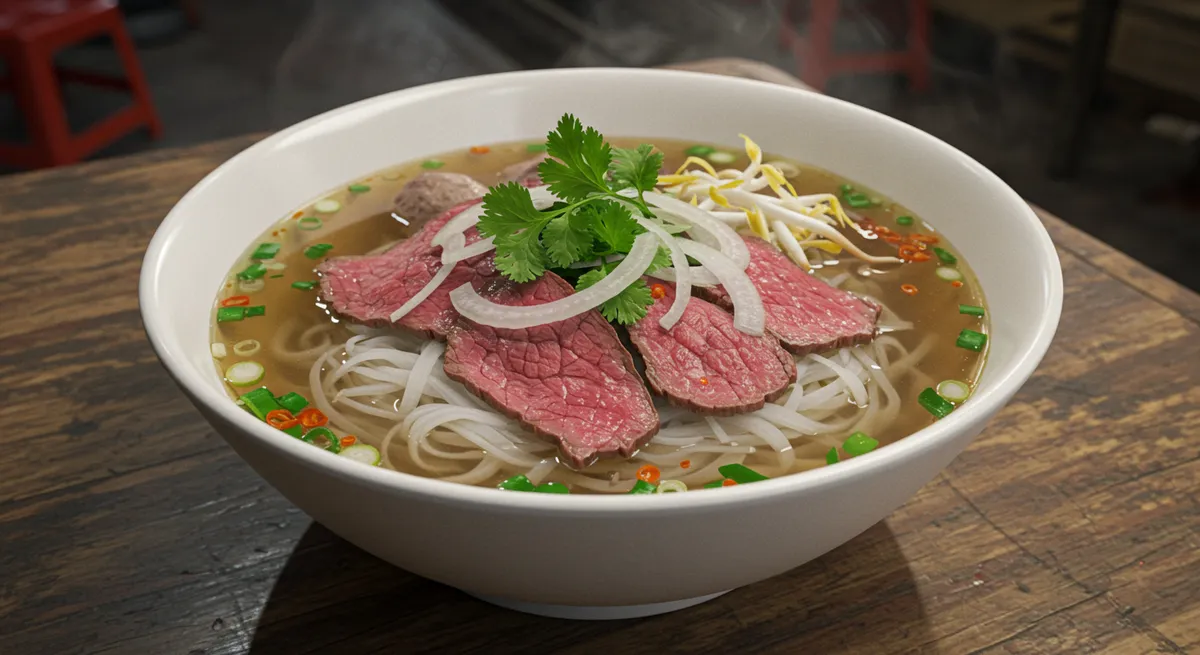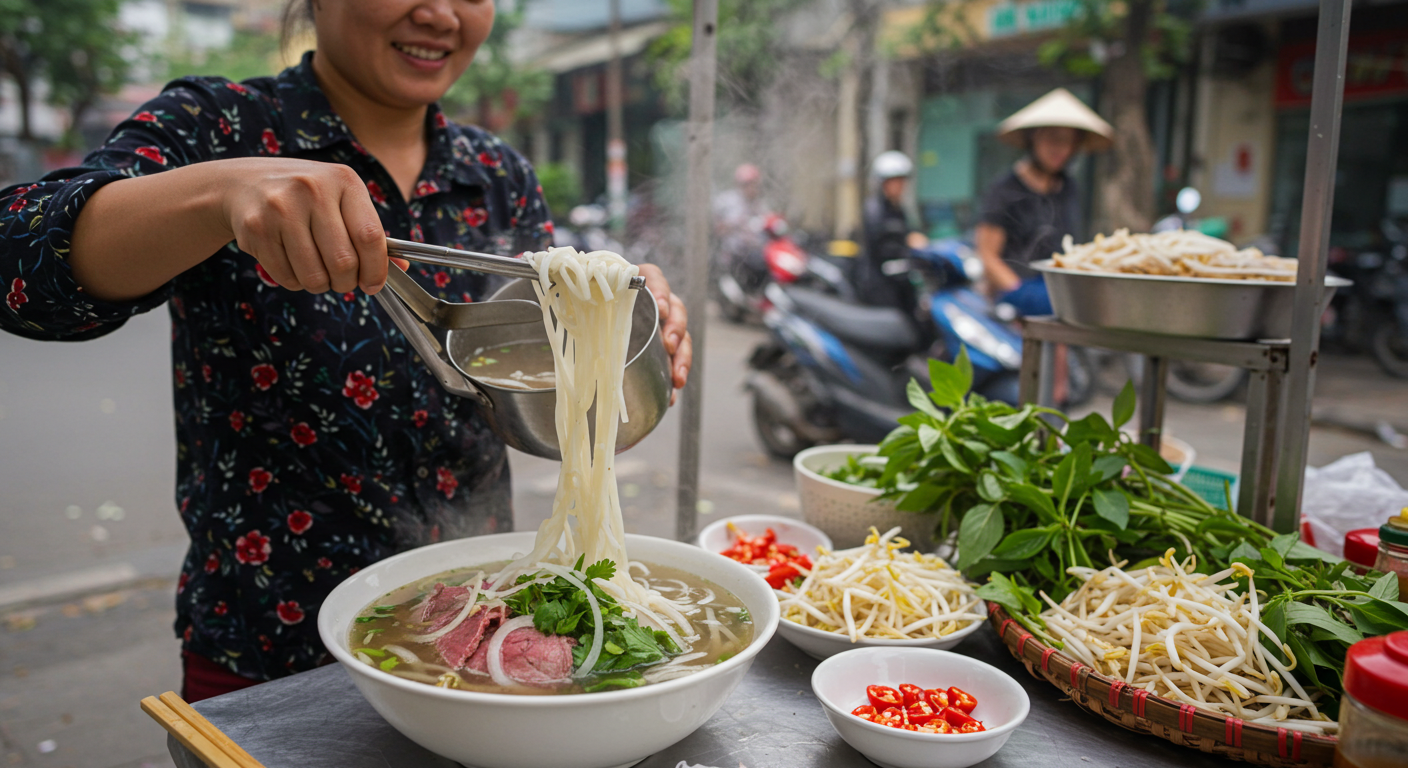
The History of Phở
Table of Contents
What is Phở?
Phở (pronounced "fuh") is a Vietnamese soup made with broth, rice noodles, herbs, and meat (usually beef or chicken). It's served in a big bowl with bean sprouts, lime wedges, and fresh herbs on the side. Today, phở is loved worldwide, but its story begins in northern Vietnam over a century ago.

More than just a meal, phở represents the essence of Vietnamese cuisine by balancing flavors, textures, and aromas in perfect harmony. The clear, aromatic broth, tender rice noodles, and fresh herbs create a symphony of taste that has captivated food lovers across the globe.
The Birth of a National Dish
Phở was born in the late 1800s to early 1900s in northern Vietnam, specifically in the Nam Dinh and Hanoi regions. Many food historians believe it first appeared near Hanoi during the peak of French colonialism.
Interestingly, phở likely developed because of French colonialism. Before the French arrived in Vietnam, beef wasn't commonly eaten there. French settlers commonly ate beef, whereas Vietnamese traditionally ate pork and chicken and used cattle primarily as beasts of burden. The French brought their love for beef, particularly in the form of "pot au feu," a French beef stew. Local cooks combined this French influence with local ingredients and cooking methods.
French demand led to a greater availability of beef in Vietnam. This in turn produced a surplus of beef bones, which Vietnamese cooks ingeniously transformed into liquid gold. They simmered these bones for hours to create a rich, flavorful broth, adding rice noodles and thinly sliced beef, along with local spices like star anise, cinnamon, and ginger. This created the first version of phở.
The Chinese Connection
While French influence introduced beef to phở, the dish also has significant Chinese roots that are often overlooked. The rice noodles and herbs generally used to make Pho have a connection to the Northern Chinese, reflecting Vietnam's long history of Chinese cultural influence.
The technique of creating clear, aromatic broths and the use of rice noodles can be traced back to Chinese culinary traditions. Vietnamese cooks masterfully adapted these techniques, creating something uniquely Vietnamese while honoring the multicultural influences that shaped their cuisine.
Regional Variations: From North to South
Initially, phở was a northern Vietnamese dish. Street vendors would carry mobile kitchens on poles over their shoulders, serving steaming bowls to hungry workers. Traditional Hanoi-style phở is known for its clear broth and minimal garnishes, focusing on the purity of the beef broth flavor.
After Vietnam was divided in 1954 following the French defeat at Dien Bien Phu, nearly a million Northerners moved south. Pho migrated with them and gained popularity below the 17th parallel, adapting to the local preferences in each area. In southern Vietnam, the dish evolved dramatically. The warmer climate and more abundant resources led to a more elaborate version:
- Southern phở characteristics:
- Sweeter broth with added sugar or rock sugar
- More herbs and bean sprouts are provided
- Additional sauces and condiments (hoisin sauce, sriracha)
- More meat varieties became available
- Larger portions and more generous garnishes
This regional evolution demonstrates how food adapts to local tastes and available ingredients, creating distinct culinary identities within the same dish.
Phở During Wartime

During the Vietnam War (1955-1975), phở became a symbol of Vietnamese resilience and adaptability. Despite severe food shortages and economic hardship, people found creative ways to make simpler versions of the dish. Some replaced beef with whatever protein was available—chicken, pork, or even vegetables—while others focused on perfecting the broth with limited ingredients.
The war years also saw the rise of "phở gà" (chicken phở) as a more affordable alternative to beef phở. Street vendors adapted their recipes to use available ingredients, proving the dish's versatility and the Vietnamese people's culinary ingenuity during difficult times.
The Great Migration and Phở Goes Global
After the war ended in 1975 and the economy struggled under new political systems, many Vietnamese people left the country as refugees during the late 1970s and 1980s. They brought their culinary traditions with them, introducing phở to the world.
In the 1980s and 1990s, Vietnamese restaurants opened in cities across America, Australia, France, and beyond. These early phở restaurants often served as cultural ambassadors, introducing Western palates to Vietnamese cuisine. By the 2000s, phở had become an international sensation, moving from ethnic enclaves to mainstream dining.
The globalization of phở led to countless variations:
- Vegetarian and vegan phở using mushroom or vegetable broths
- Seafood phở with shrimp, fish, or crab
- Fusion versions incorporating non-traditional ingredients
- Instant phở products for quick meals at home
- Upscale restaurant interpretations with premium ingredients
The Secret is in the Broth
What makes phở special is its deeply complex broth. Traditional phở broth requires patience and skill, simmering for at least 6-8 hours (some recipes call for 12-24 hours) to allow the flavors of bones, spices, and aromatics to create a deep, complex taste.
The essential spice blend typically includes star anise, cinnamon, cloves, and coriander seeds. Fennel and black cardamom are great additions, too. These spices are carefully toasted before being added to the broth, releasing their aromatic oils and creating the distinctive phở fragrance.
Each family and restaurant guards their secret recipe jealously, with slight variations in spice proportions, cooking times, and additional ingredients that make each bowl unique.
Traditional Phở Preparation Methods
The traditional method of making phở is both an art and a science. Beef bones (typically marrow and knuckle bones) are first blanched to remove impurities, then slow-simmered with charred onions and ginger. The charring process, done over an open flame, adds a subtle smoky sweetness that's essential to authentic phở.
The spice blend is toasted in a dry pan until fragrant, then wrapped in cheesecloth and added to the simmering broth. This method allows the spices to infuse the broth without leaving residue, maintaining the clear, clean appearance that's characteristic of good phở.
Cultural Significance and Social Role
In Vietnamese culture, phở serves multiple social functions beyond mere sustenance. It's a breakfast staple, a comfort food, and a social lubricant. Phở shops traditionally open before dawn, serving workers heading to their jobs. The communal aspect of sharing a meal, slurping noodles, and customizing garnishes creates a sense of community.
The dish also represents Vietnamese values of balance and harmony. The clear broth symbolizes purity, the herbs represent freshness and vitality, and the careful balance of flavors reflects the Vietnamese philosophy of moderation and equilibrium.
Modern Phở Variations

Today's phở landscape is incredibly diverse. Modern variations include:
- Phở chay: Vegetarian versions using mushroom or vegetable broth
- Phở gà: Chicken phở, now as popular as beef versions
- Phở tái: Featuring rare beef slices that cook in the hot broth
- Phở đặc biệt: "Special" phở with multiple beef cuts
- Fusion phở: Incorporating ingredients from other cuisines
Phở Today
Today, phở is more than just food in Vietnam—it's part of the national identity and cultural heritage. Street vendors still sell it for breakfast, families gather over steaming bowls on weekends, and upscale restaurants offer gourmet versions with premium ingredients.
Internationally, phở has become a gateway food, introducing people to Vietnamese cuisine and culture. It appears on menus from food trucks to Michelin-starred restaurants, adapted to local tastes while maintaining its essential character.
The dish has also become a symbol of Vietnamese resilience and adaptation. Born from colonial influences, refined through regional variations, tested by war, and ultimately embraced by the world. In many ways, the history of phở mirrors the history of Vietnam itself: complex, layered, and ultimately triumphant.
The next time you enjoy a bowl of phở, remember you're tasting more than just a delicious soup. You're experiencing a dish that tells the story of Vietnam's history, from colonialism to war to global connection, all in one wonderful bowl. Every spoonful carries the legacy of countless Vietnamese cooks who transformed simple ingredients into something extraordinary, creating a dish that continues to bring people together across cultures and continents.
